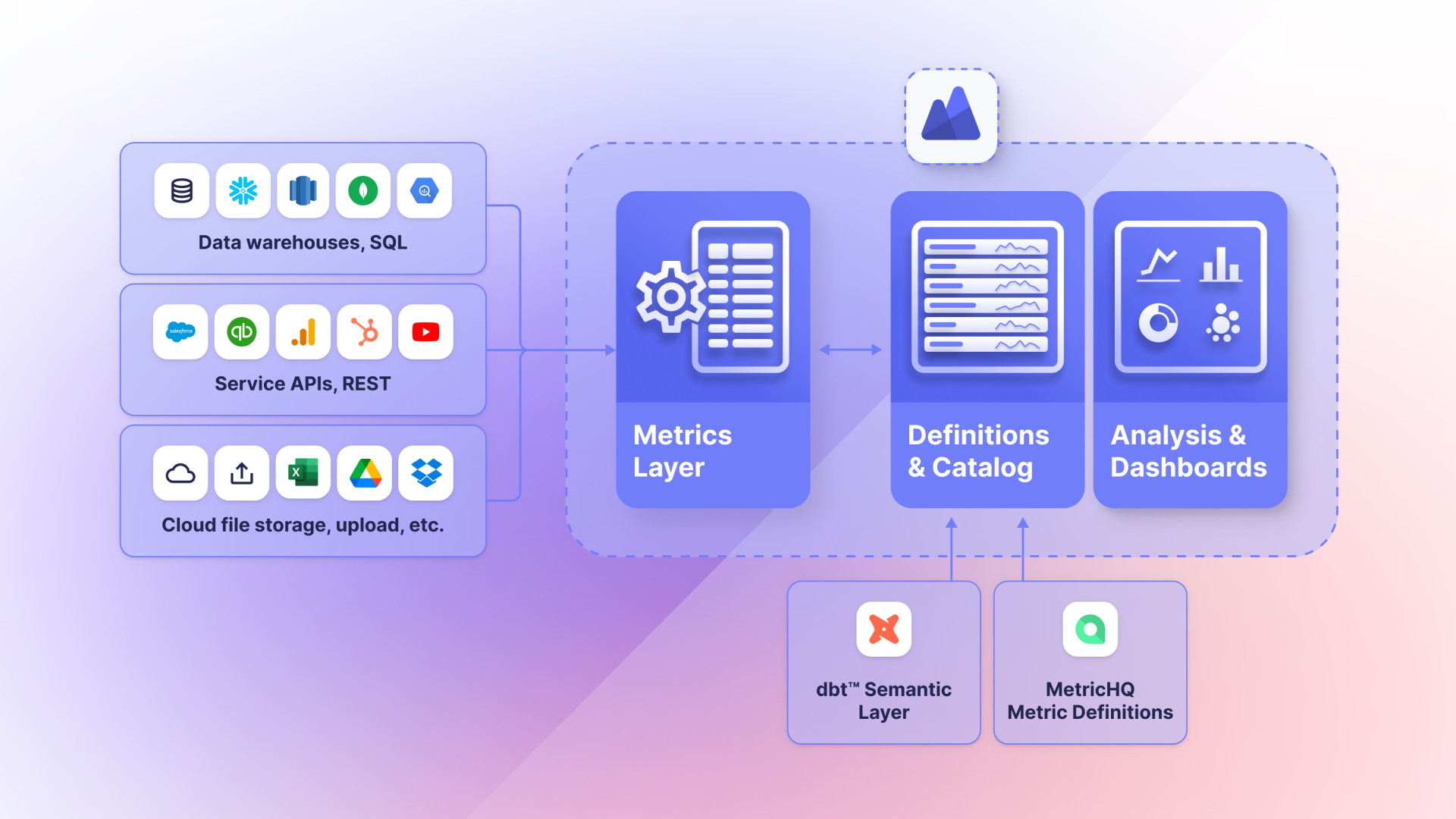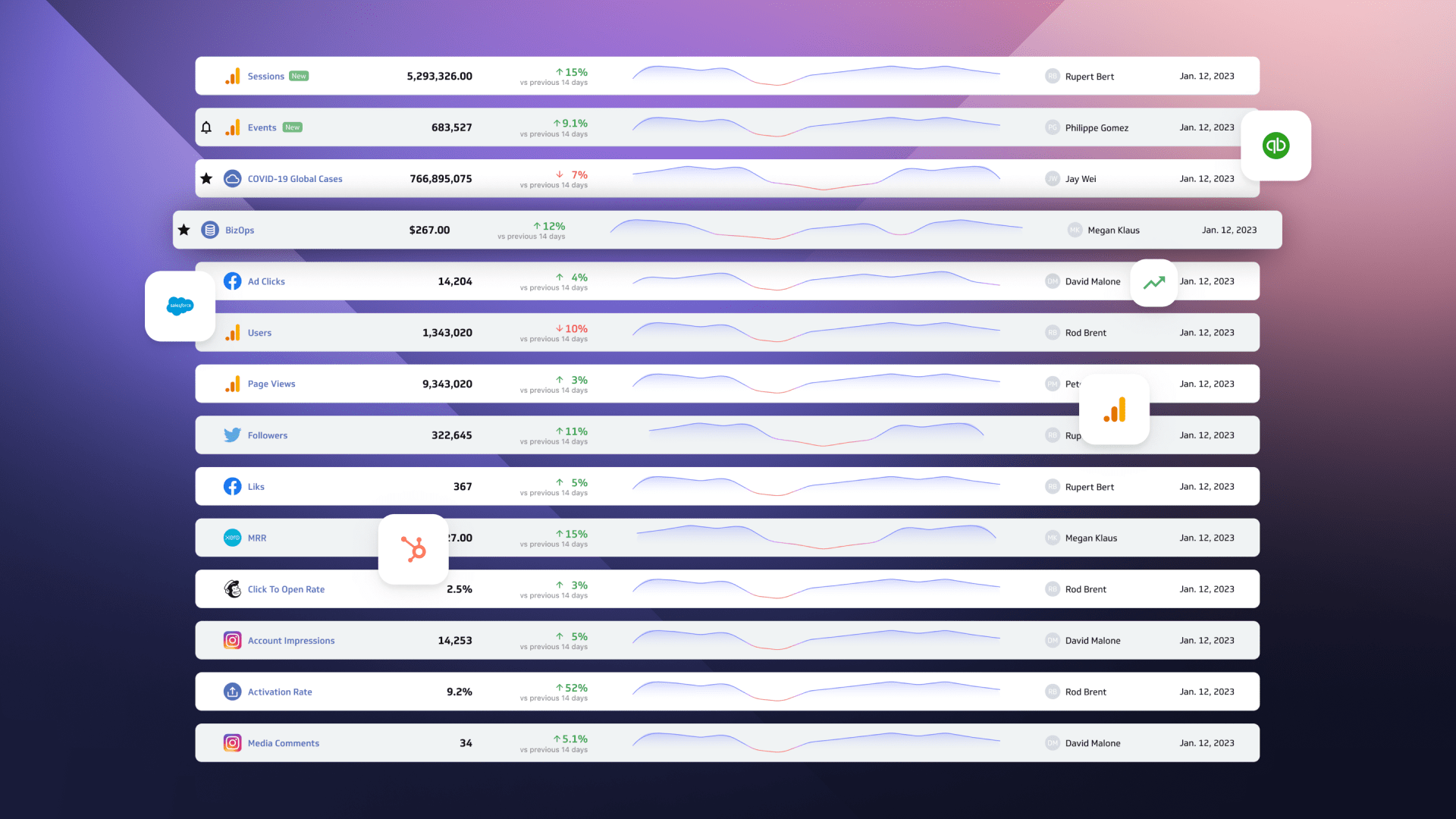
Articles
Semantic Layer: How a Semantic Layer Unlocks Insights From Data
The potential of data within the business environment is tremendous. Each day, organizations generate vast volumes of data from diverse sources and in various formats. When harnessed effectively, this...

Data Stack
Data Stack articles.

ELT vs ETL Comparison: Which One Should You Choose, ELT or ETL?
Choosing between ELT (Extract, Load, Transform) and ETL (Extract, Transform, Load) can be overwhelming. Both of them seem similar, but they have important differences that affect how you handle data for your organization.Read more

What is Extract, Load & Transform (ELT)?
The Extract, Load, & Transform (ELT) process is one of the most common ways of handling data. It’s a data integration process that takes the data from your sources, puts it into a single storage system, and then modifies it into a useful format.Read more

What is Extract, Transform & Load (ETL)?
ETL stands for Extract, Transform, and Load—three crucial steps in data management. First, you collect or extract data from different sources, then clean and organize the information.Read more

Top Data Governance Best Practices
Data governance is managing the availability, integrity, and security of information within an organization. However, it’s more than just putting up measures for data quality and compliance. After all, there’s data governance, and then there’s good data governance.Read more

Data Governance Principles: Challenges and Best Practices
Data governance starts with core principles that lay a solid foundation for managing your organization's data assets. These principles establish a framework of trust by making sure the data you collect is accurate, accessible, and secure.Read more

Effective Data Governance Strategy: Challenges, Tools, and Metrics
Data governance refers to the overarching framework and processes that organizations put in place to manage and control their data assets effectively.Read more

What is a Data Lake?
Data has become quite big and complex in recent years with almost all interactions going digital and stored electronically. This has added a new set of challenges for organizations when it comes to managing and analyzing this vast amount of data. This is where data lakes come into play.Read more

What is a Metrics Layer?
A metrics layer serves as a bridge between raw data and its end users in a modern data stack. It aids data transfers while making sure that the information is refined, defined, and standardized.Read more

What is a Modern Data Stack? Definition, Stages, & Best Practices
A modern data stack is a useful tool that can help you make the most of data to drive your decisions and strategies.Read more

What is an Integration Layer?
The integration layer makes sure that all this data is extracted, transformed, and loaded safely from one system to another. Understanding what this tool does can help you make the most of it, allowing you to run your operations more efficiently.Read more

What is Data Connectivity?
Invest in good data connectivity solutions and practices to work more efficiently. As a result, you can improve customer experiences and stay ahead of competitors.Read more

What Is a Data Warehouse?
A data warehouse lets businesses keep their important information safe and organized. This tool can help you make better decisions and understand your customers.Read more

What is Data Governance?
Data governance helps make sure that your company's information is correct, safe, and useful. With the right governance system in place, businesses can sidestep issues and make informed decisions. Read more

What is a Data Catalog? Definition, Challenges, and More
A data catalog can help professionals organize, find, and manage their data effectively. This article delves into its importance, implementation, and more.Read more

Semantic Layer: How a Semantic Layer Unlocks Insights From Data
The potential of data within the business environment is tremendous. Each day, organizations generate vast volumes of data from diverse sources and in various formats. When harnessed effectively, this data can unlock valuable insights, drive innovation, optimize operational efficiency, and guide informed decision-making processes through meaningful metrics. However, it's crucial to acknowledge that the majority of a company's workforce are individuals that aren't data engineers or analysts working directly with raw and complex data. As a result, it is important to make this wealth of information available in a manner that's understandable to the entire organization, offering a business-friendly view for all stakeholders.Read more

Semantic Layer vs Metric Layer: Which Metrics Solution Is Right For Me?
Metrics can be created, managed and consumed by data stacks containing a semantic layer, a metrics layer, or a hybrid solution. The choice of which system to use comes down to various factors such as: The current data infrastructure in the organization, the scale of the data being processed, the needs and experience of the data teams and data consumers, and the overall investment in data solutions.Read more